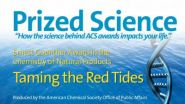Sleep disturbances show clear association with work disability
2010-10-26
(Press-News.org) Sleep disturbances increase the risk of work disability and may slow the return to work process. This is especially true in cases where work disability is due to mental disorders or musculoskeletal diseases. These results come from a recent study conducted by the Finnish Institute of Occupational Health in collaboration with the universities of Turku and London.
The research is being conducted as part of two major research projects on social capital in the workplace (Kunta10) and on well-being in the hospital workplace. The follow-up study is part of the Academy of Finland Research Programme on The Future of Work and Well-being (WORK) and the Responding to Public Health Challenges Research Programme (SALVE).
Sleep disturbances include difficulties initiating sleep, intermittent and non-restorative sleep, and waking up too early. The occurrence of these disturbances was studied in 56,732 public sector employees in Finland. During the three-year follow-up, 7 per cent of them were incapacitated for work. Data on work disability and sickness absences lasting 90 days or longer, disability pensions and deaths were obtained from national registers. The associations of sleep disturbances with returning to work were studied in employees who were on long-term sickness leave or retired on disability pension.
Just over one-fifth or 22 per cent of the employees studied reported sleep disturbances on at least five nights a week. A further 26 per cent reported sleep disturbances on 2 nights a week. In the former group, the risk of work disability for any reason was one and a half times greater than in employees who reported sleep disturbances once a week or less often.
The risk of work disability due to mental health problems or musculoskeletal disorders was elevated both in employees reporting mild and in those with severe sleep disturbances. Severe sleep disturbances were also associated with work disability due to cardiovascular diseases, neurological diseases and external reasons such as accidents.
Sixty per cent of the employees who were incapacitated returned to work within two years. The risk of a delayed return to work was higher among those whose work disability was due to musculoskeletal disorders. Among men whose incapacity was due to mental health diseases, both mild and severe sleep disturbances predicted a slower return to work.
The results of the study have been published in the latest issue of the Sleep journal, see www.journalsleep.org/ViewAbstract.aspx?pid=27917.
INFORMATION:For further information, contact Senior Researcher Paula Salo at the Finnish Institute of Occupational Health, tel. +358 30 474 7553, email. paula.salo@ttl.fi
Academy of Finland Communications
Communications Specialist Leena Vähäkylä
tel. +358 9 7748 8327
END
ELSE PRESS RELEASES FROM THIS DATE:
2010-10-26
A child's chances of developing allergies or wheezing is related to how he or she grew at vital stages in the womb, according to scientists from the University of Southampton.
The new research, funded by the Medical Research Council (MRC) and the British Lung Foundation, and undertaken at Southampton General Hospital, reveals that fetuses which develop quickly in early pregnancy but falter later in pregnancy are likely to go on to develop allergies and asthma as children. Scientists believe this is due to changes in the development of their immune system and lungs.
A ...
2010-10-26
The field that these researchers are working in is known by its nickname, "anti-spoofing", and basically consists in trying to detect all of the possible attempts at fraud that a biometric system might suffer, especially with regard to an action in which the user presents the biometric proof to the system. "What we are trying to do is detect those attempts so that the system can then act accordingly", explains the head of UC3M's Grupo Universitario de Tecnologías de Identificación (GUTI)(University Identification Technology Group), Raúl Sánchez Reíllo, who is leading this ...
2010-10-26
Flamingos apply natural make-up to their feathers to stand out and attract mates, according to a new study by Juan Amat, from the Estación Biológica de Doňana in Seville, Spain, and colleagues. Their research is the first to demonstrate that birds transfer the color pigments (carotenoids) from the secretions of their uropygial gland for cosmetic reasons. The uropygial or preen gland is found in the majority of birds and is situated near the base of the tail. The study is published online in Behavioral Ecology and Sociobiology, a Springer journal.
There is evidence ...
2010-10-26
AUGUSTA, Ga. - A daily dose of whole body vibration may help reduce the usual bone density loss that occurs with age, Medical College of Georgia researchers report.
Twelve weeks of daily, 30-minute sessions in 18-month old male mice – which equate to 55- to 65-year-old humans – appear to forestall the expected annual loss that can result in fractures, disability and death. Dr. Karl H. Wenger, biomedical engineer in the MCG Schools of Graduate Studies and Medicine, reported the findings with his colleagues in the journal Bone.
Researchers found vibration improved density ...
2010-10-26
A popular cancer drug could be produced cheaply and sustainably using stem cells derived from trees, a study suggests.
Researchers have isolated and grown stem cells from a yew tree whose bark is a natural source of the anticancer compound paclitaxel. The development could enable the compound to be produced on a commercial scale at low cost, with no harmful by-products.
Scientists and engineers behind the development say the drug treatment – currently used on lung, ovarian, breast, head and neck cancer – could become cheaper and more widely available.
The study was ...
2010-10-26
Patients with cancer found at the end of the large intestine called the rectum who receive one week of radiation therapy before surgery have a 50 percent reduction in chance that their cancer will return after 10 years, according to a large, randomized study presented at the plenary session, November 1, 2010, at the 52nd Annual Meeting of the American Society for Radiation Oncology (ASTRO).
"We believe that this short course of radiation will open a new window of opportunities in the treatment of rectal cancer," Corrie Marijnen M.D., lead author of the study and a radiation ...
2010-10-26
Men with prostate cancer who take anticoagulants like aspirin in addition to radiation therapy or surgery may be able to cut their risk of dying of the disease by more than half, according to a large study presented on November 3, 2010, at the 52nd Annual Meeting of the American Society for Radiation Oncology (ASTRO) in San Diego. The study involved more than 5,000 men with localized cancer whose disease had not spread beyond the prostate gland.
"Evidence has shown that anticoagulants may interfere with cancer growth and spread," Kevin Choe, M.D., Ph.D., lead author of ...
2010-10-26
Men treated for prostate cancer who were diagnosed after the start of routine screening had a significantly reduced risk of the disease spreading to other parts of the body (metastases) within 10 years of treatment, compared to men who were treated prior to the use of routine screening, according to the first study-of-its-kind presented November 1, 2010, at the 52nd Annual Meeting of the American Society for Radiation Oncology (ASTRO).
In 1993, routine prostate cancer screening became widely implemented through the use of a prostate specific antigen (PSA) test that was ...
2010-10-26
Prostate cancer patients who are treated with a combination of hormone therapy and radiation have a substantially improved chance of survival compared to patients who do not receive radiation, according to interim results of the largest randomized study of its kind presented at the plenary session, November 1, 2010, at the 52nd Annual Meeting of the American Society for Radiation Oncology (ASTRO).
From 1995 to 2005, 1,205 men with high-risk prostate cancer in the United States, the United Kingdom and Canada were randomly selected to receive hormone therapy alone or a ...
2010-10-26
WASHINGTON, Oct. 25, 2010 — Green gasoline is plants in your tank, motor vehicle fuel made from corn, cornstalks, sugarcane, and other crops. It also is gasoline made with recipes that reduce the need for harsh, potentially toxic ingredients like hydrofluoric acid or sulfuric acid that are used at about 210 oil refineries worldwide. Now scientists have found an answer to a half-century quest for a way to make gasoline in exactly that kind of greener, more environmentally-friendly way.
That advance highlights the second episode of a new video series, Prized Science: ...
LAST 30 PRESS RELEASES:
[Press-News.org] Sleep disturbances show clear association with work disability


